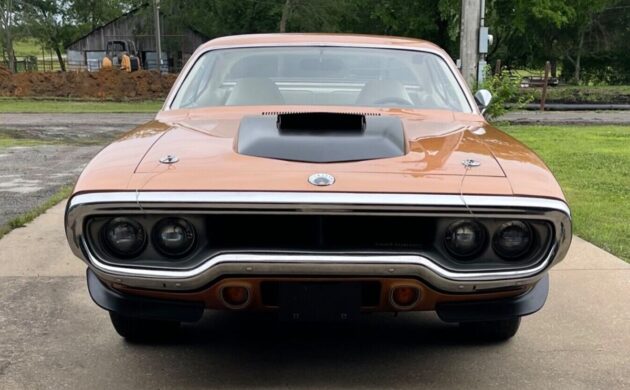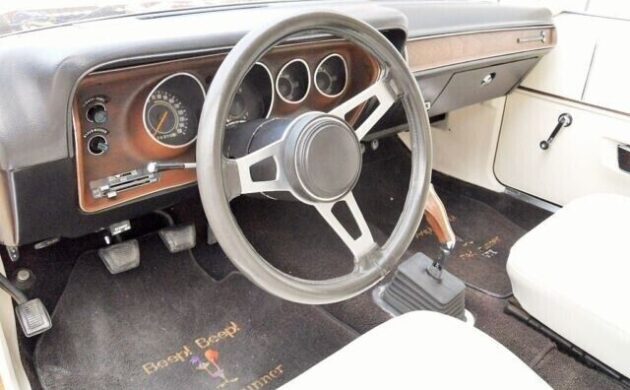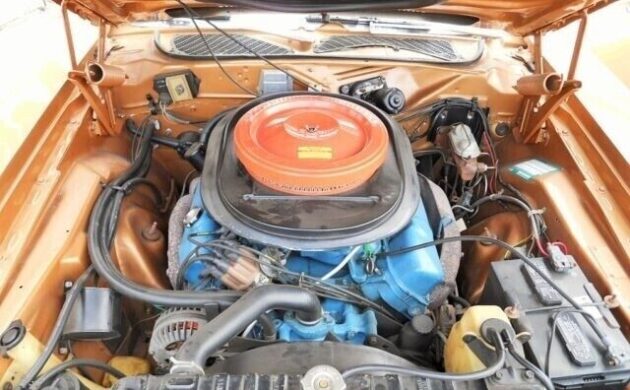UPDATE: 07/13/2022: While the classic market is presently performing better than most areas of the economy, there are still cars that fail to sell on the first attempt. Sometimes the situation arises as sellers are too optimistic with their pricing, while at others, it can be a case of the right person not spotting the auction. I suspect the latter may be the case with this 1972 Plymouth Road Runner GTX. It failed to sell with the bidding at $56,801, so the owner is having another bite at the cherry. They have listed it here on eBay, and the details remain the same. The auction opened at $50,000, but there have been no bids.
06/14/2022: As far as muscle cars go, the upscale Plymouth GTX led a short life. It was launched in 1967 but would quickly take a back seat to the budget-minded Road Runner that debuted a year later. Low demand for the car led Plymouth to discontinue it as a standalone model after 1971. For 1972, it would be an option on the Road Runner, as is the case with the low-production edition of the seller’s car. We’re told this bird has just 24,000 miles, working out to less than 500 miles per year. Hailing from Wagoner, Oklahoma, this beauty is keeping bidders busy here on eBay.
Considered a “gentleman’s muscle car,” Plymouth didn’t fool around in the performance department. From the beginning, the “Super Commando” 440 cubic inch V8 was standard fare in the GTX, producing a whopping 375 hp. Until the 6-Pack version of the motor came along, the only way to get more power was to opt for the 426 Hemi. Sales almost disappeared from the radar screen when Plymouth made the GTX a Road Runner option in 1972. They only built 672 copies of the GTX; of those, only 219 units had the 4-speed manual transmission. But the problem wasn’t just the auto’s fault as demand for muscle cars, in general, was way off – Plymouth unloaded only 7,628 Road Runners in total, a considerable drop from the 1960s.
We’re told that the seller purchased this GTX from Gas Monkey Garage seven years ago, and the mileage then was only 23,370. So not only has the seller treated it carefully, but those who came before him gave it the same treatment. They make no mention of a cosmetic or mechanical restoration. The Mojave Tan paint and black interior look great whether redone or not.
The seller sprung for a Govier Report on the Plymouth to back up its broadcast sheet. That revealed this is a one-of-one car, given its paint color and choice of options. The drivetrain is numbers matching along with the Hurst Pistol-Grip shifter. The GTX is equipped with spoilers fore and aft (to help keep it from flying away?), so this is about as badass as a muscle car could get in 1972, though the changes in horsepower ratings had reduced hp to 280. One of the cars in this article on GTX evaluation is none other than the seller’s beauty! That same article says this can potentially be an $80,000 acquisition.






My eyes are seeing a white interior though the carpet is black.
Really nice car
I do believe that if a white interior was ordered it got a black dash and carpet, we had a 70 barracuda convertible that had white leather seats with black carpet and dash. That was in 79 or 80, that car was so rusty you could stick your head thru the front fender. The interior was spotless but the carpet sagged because there was not metal left under it. Only thing that didn’t work was the left rear window didn’t roll down. Started it up and drove it around a little, the block was cracked on the 318 kept us from running it too far, we had to get out Duke style as the doors would not open anymore. Gave 25 bucks for it and it was junked.
That was the norm for white trim in most, if not all, models at Chrysler in those days. They didn’t allow for white trim with other colors for the carpet, instrument panel pad, etc. It was always white vinyl or leather upholstery and door cards with an otherwise black interior.
Back before time was measured, a fellow street racer, and new dad, offered me his nice black/black 72 GTX with a remarkably effective 440 for $1700. I passed because it was an automatic.
I waa offered in 1979 a hemi cuda for my 55 chevy hardtop hot Rod but turned down😭😭😭😭😭😭😭😭😭😭😭
These were an extremely clean curvy design and one of my favorite US cars. It all works so well in any metallic color and this one is great . The Chrysler black and white interiors were cool too , and so much cheaper to put together.
The 71′ GTX in green in my favorite car but, I could manage alright with this one!
This indeed is a very rare car. Worked as a car jockey at a Sear Auto Repair Center and at a huge Drive-in Theater that held well over 500 cars, nitely, when I was a teenager. And never saw one of these GTX’s.
One of my favorite Mopars, styling-wise. The strobe stripe over the roof of the car is a great accent element, reducing the heavy mass of rear sheet metal. Beautiful car.
Having the Air Grabber hood makes this car even more rare, if factory installed. The option was discontinued very early in the production run.
Was the rising hood scoop available on the non gtx roadrunner?
Was there a sister car made by Dodge also available with that rising hood scoop?
It was available on Roadrunners or GTX in 70-71, and apparently part of ’72. Also available on the Charger R/T and Superbee in 71.
As far as I know the engine should be painted orange not blue.
Blue was the color on big blocks not raised blocks.
1968 was the last year raised blocks were painted turquoise.
68 to 71 Hi Performance Mopar engines were painted street hemi orange. very late into the 71 Model year all Mopar engines started being painted a corporate blue. I seen a 71 Cuda convertible once with a blue 383 engine. By the way companies like Duplicolor have engine spray bombs called Hemi Orange but its Race Hemi Orange. Street Hemi Orange is much more brownish.
The change from Hemi Orange with a black air cleaner to Corporate Blue with a Hemi Orange air cleaner on high performance engines was a running change during the ’71 model year. By 1972 nothing was orange but the air cleaners on HP engines, regardless of engine family.
If you find a ’72 or later Mopar with an orange engine it’s either not numbers matching with an earlier engine or it’s been treated to a non-correct “rattle can rebuild”.
1966-’69 big blocks were turquoise, except the 1969 440HP and 383 Road Runner/Super Bee engines. 1969-’71 HP big blocks, B and RB, were Street Hemi orange and I *believe* standard-perf engines were Corporate Blue starting in 1970. Starting in ’72, everything was painted Corporate Blue from the Slant Six to the 440 Six Pack (yes, a few were built).
The 1968 and some very early ’69 340s were red, 1969 340s were a one-year-only blue that nobody has been able to duplicate, and ’70-71 engines were also SH Orange. Obviously, in ’72 they turned blue as well.
This was the last year for Dana 60 passenger cars and the Air Grabber, with the latter being a very rare option.
All Chrysler corporation engines went blue in 72.
As soon as I saw it, I knew it was the one from Gas Monkey garage. Too hard to forget that one.
I used to own this car, It’s a great rare B-body.
Todd, I own it now, I’d love to talk to you sometime if you see this reply.
Well, we know one thing. If the guy bought it from GMG? He overpaid.
Also the coolest factory exhaust tips ever.
Yes, available on the Road Runner as well from mid year 1969 thru ’72. The Dodge Super Bee had a “fresh air” hood option as well, they called it the “Ram Charger.” It opened and closed “internally” with only hood scoops visible on the outside. Only the Road Runner or GTX had the “pop up” “Air Grabber” hood and only for ’70-’72. ’69 Road Runner/GTX Air Grabber like the Super Bee, “internally” actuated.